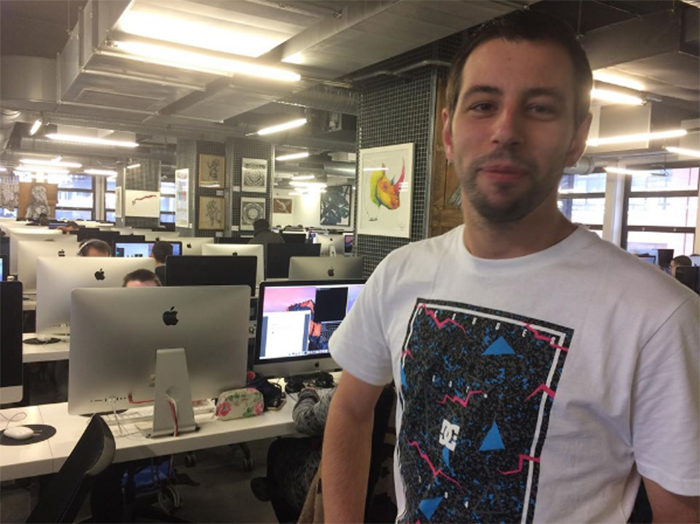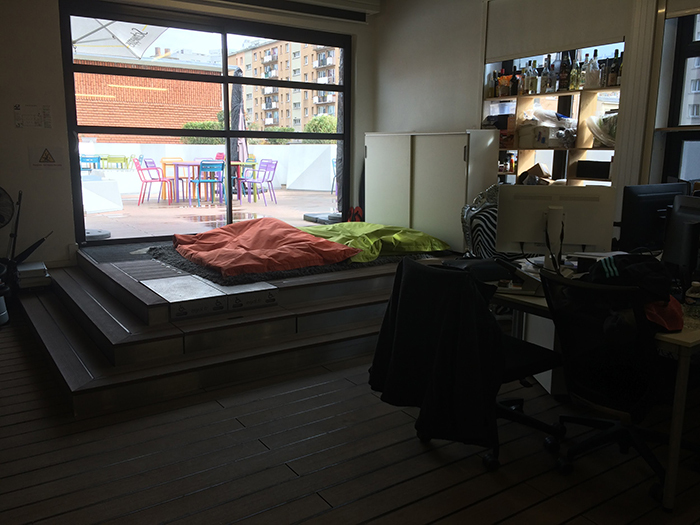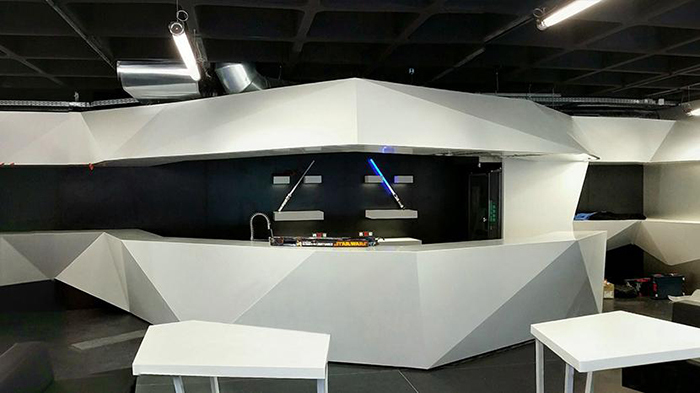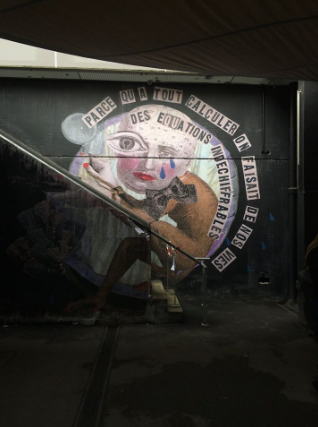42: A School Where You Learn By Yourself (with others)
Have you ever imagined what a school might be like without teachers? No one to tell you when to start, what to write down or when to stop. A school where students progress according to their own pace and motivation, where they will be the principal actor in their development? It might seem like some sort of unrealistic utopia, but the École 42 is hedging its bets on their surprising educational program.
42 is a private French school that exclusively trains future I.T. coders. Completely free, it was developed by industry professionals from the IT sector and uses gamification to help the students to progress. They are (almost) masters of their own schedule when it comes to learning and the rate of their progress. 42’s program is based on a system of peer-based learning which puts the emphasis on exchanges between students. Even the evaluations are done amongst peers. This principle applies everywhere. Independently, when a student has a question, they are invited (even obliged) to consult with one of their colleagues to find the solution. The concept of the school’s audacious proposition is simple: collaboration and mutual support are the core values. They are the foundation of the pedagogy for a school which prides itself on training well-rounded coders who are now the most sought after in the IT domain.
Searching for Inspiring Initiatives
From March 3rd to 13th, 2017, the Living Lab en innovation ouverte (LLio) research group from the Cégep de Rivière-du-Loup organized an exploratory field trip to innovative spaces in France. I was one of the fortunate people who participated as a researcher during this adventure. The objective of our visit was to take note of different social innovation initiatives and to find inspiration by observing what was happening elsewhere in order to bring back some ideas to implement here. We started in Paris, then went to Saint-Etienne for the Biennale de design whose theme revolved around how the notion of work is changing. During the course of our 10-day trip, we also discovered the concept of third places:
Quote “Third places are sites which, without being at home or at work, are places of social belonging, innovation and collaboration. They are collaborative work spaces (coworking), fab labs and any other space that promotes, encourages and dedicates itself to social innovation through collaboration.” {Translation}
Along these lines, a visit to France’s École 42, the private self-training educational establishment founded in Paris in 2013, was a must-see element for our trip.
An Atypical Pedagogical Approach for the School of Tomorrow

The 42 school.
The entrance to the building set the tone. We are in a select club. Not just anyone can enter the building 24/7. You need a badge to pass through the entrance gates. To be admitted to this tuition-free school, a very selective testing process separates the 900 future students from the 40 000 applicants that try to get in each year. That said, the selection criteria is unknown. All that we know is that a student is chosen:
- For their potential aptitude to face this atypical and demanding pedagogical approach
- For their personality
- For the diversity and richness that they will bring to the cohort
Following these criteria, the first admission refusal will also be the last. 42 will not review a candidate more than once, since the person’s personality is not likely to change from one application to the next.

Charles Maublanc, Communications Coordinator for 42, in one of the work rooms. Photo courtesy of Rachel Berthiaume.
A Collaborative Gamification Approach
The magic begins once a candidate is admitted. From the very beginning of their training, students will know each of the milestones in their learning path up until the end of their program. This program takes the form of a kind of virtual game board where the student moves its piece forward at their own pace as their accomplishments continue to accumulate (assignments, workshops, projects based on real-world examples, etc.).
Essentially, the learning happens in large common rooms that have 300 workstations each. The students know the steps they need to succeed and use their time as they see fit. They learn by themselves, through trial and error, using tutorials created by the school or with some support from their fellow students who are all at different points in their training. It becomes almost impossible to succeed without asking for some help from their peers.
A pedagogical team takes care of creating the workshops and projects that are assigned to students. This team is comprised of industry professionals and student interns chosen from the 42 school roster. It is unclear whether a pedagogical professional is also included within this team. 42 skillfully dodges the question. It evolves outside of the school system and does not defer to any ministry or public institution. It was designed by and for the competitive and innovative world of information technology.

A part of the “jar” (bocal in French) where the pedagogical team officiates. Photo courtesy of Rachel Berthiaume.

The work rooms. Source: www.42.fr
42 students vary in age (even if 18- to 30-year old students are generally targeted) and come from different walks of life. The wide range of profiles contributes to the richness of the place, but also to the quality of the learning. 42 is as concerned with knowledge as behaviour and know-how, just like in real-life. The motivation to succeed and progress belongs to the student and the student alone: There are no teachers to require, regulate and evaluate. Each one follows their learning path at their own pace. The acquisition of knowledge and its verification happen through challenges, which are called piscines (swimming pools in French), and internships within the industry.
Since the learning cannot happen unless the person is physically present, the spaces are designed to make the students feel like staying. The spaces are configured along these lines: There are rooms for working, but 42 is above all a living space. There are rooms for relaxing, others for playing video games and even a very trendy cafeteria with free fruit. There’s even a barbecue outside. All over the school there is a permanent exposition of street art, which is open to the public 2 nights a week.

The game room. Source: www.42.fr

A counter in the cafeteria. Source: www.42.fr
This atypical project is possible thanks to the (exclusive!) financial support of Xavier Niels, a wealthy French entrepreneur, who started with nothing and wanted to give something back to France – the country where he made his fortune. 42 seems to have the unwavering support of industry, judging by the number of internships offered to students. The school endeavours to have its students create at least 5 Internet giants (per year), who, in turn, will help the school to continue through the auspices of the French learning tax credit.
Visionary, Utopic and Transferable?
In summary, 42 is out of the ordinary and gives you the impression that it is driving a revolution in education which is based on strong values unique to the school of the 21st century:
- Autonomy
- Intrinsic motivation
- Collaboration
- Mutual support
- Realistic scenarios
- Beautiful and stimulating spaces
From the outside, it’s El Dorado. Utopia. The dream. The apparent success of the model and the enthusiasm of the people we encountered there made us a bit envious. This visit forced me to reflect on my own conceptions about education. I’m trying to reflect in such a way that I can intelligently reinvest what we have seen there here – to export some of the ideas from 42 to domains other than programming.

An example of the street art that adorns the walls of the school. Photo courtesy of Rachel Berthiaume.
For this reflection, it’s important to distance ourselves and be critical about such models of instruction. Beyond the first ‘piscine’ which lasts one month and is, in essence, a veritable entrance exam for the school, other immersive sessions are planned as part of the learning path. These are periods that last a few days in which the future coders must deliver a certain number of projects, whether as a team or individually. It’s normal to forego sleep and spend dozens of consecutive hours at the school to work. Our guide admitted that even a professional coder would not be able to deliver the requested projects by the posted deadline. No doubt that the students learn an enormous amount through these exercises, but you could legitimately call the pedagogical value of placing the students in such a high-pressure situation into question. If the advantage is to prepare students for their professional life, allow me to question the working conditions of these places who try to make burnout and achieving the impossible some kind of badge of honour.
Far from the contemporary considerations of inclusiveness and universal design for learning, 42’s model is elitist. It means that the weakest elements remove themselves. The discourse that reigns in the organisation only speaks of their successes, but I would be curious to learn more about the dropout rate. That said, the model is indeed inspiring on other levels. Visiting the school truly sparks the imagination. You should see how these inviting spaces make you want to work there. You feel the feverishness of the place, the tingling and the creativity. Is it a new paradigm in education, a utopia or just smoke and mirrors? It seems to me that there is clearly something relevant to be derived from this version of the school, but what exactly? Where do we get started? True to the form of 42, I imagine that starting by asking you – my peers – would probably be the best idea I could advance.
I invite you to visit the school’s web site which explains 42’s philosophy and how they operate in much greater detail than I have provided here.
To see the video vignettes developed by the LLio on the other inspiring ‘third spaces’ that we visited on our trip, please visit our Facebook page Exploration des tiers-lieux.

